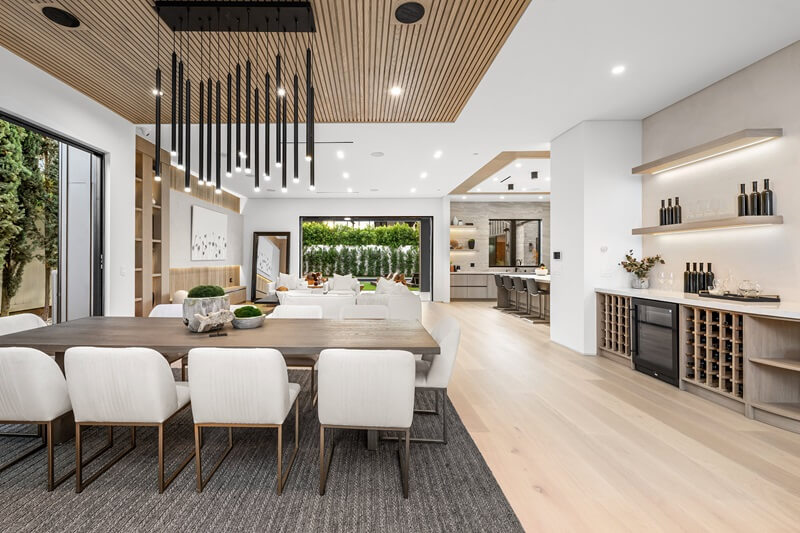Emerging in the early 20th century, Art Deco style embodies luxury and elegance, characterized by bold geometry, sleek lines, and an unmistakable sense of glamour. Rooted in opulence and functionality, this aesthetic transformed both architectural and interior design in major cities worldwide. By exploring its essential components, you can capture the essence of this decorative movement within any modern home.
Historical Influence and Global Inspiration
This decorative style developed during an era of immense social and technological change. Following World War I, society embraced progress and prosperity, shaping a style that showcased wealth, sophistication, and a forward-looking spirit. Strong influences from ancient Egyptian art, African tribal motifs, and the Machine Age are evident, with many pieces designed for beauty and functionality. New York, Paris, and other urban centers led the way, inspiring luxurious materials, symmetry, and distinct patterns.
Defining Colors and Patterns
Colors are key to this aesthetic, blending rich, jewel-toned hues with sophisticated neutrals and metallic accents. Here’s a closer look:
Dramatic Hues and Metallic Finishes
Colors such as deep emerald, cobalt blue, and royal purple stand out against neutral backgrounds of beige, black, or cream. Metallic finishes—particularly in gold, silver, and chrome—enhance the sense of luxury, providing shine and a reflective quality that brightens interiors.
Geometric Patterns and Angular Designs
Geometric motifs are fundamental, often seen in rugs, wall designs, and textiles. Zigzags, chevrons, and sunburst patterns create a dynamic visual appeal. These bold shapes not only add style but also bring rhythm and movement into the space, balancing both elegance and energy.
Luxurious Materials and Rich Textures
High-quality materials elevate this aesthetic, bringing a touch of refined glamour to every piece.
Dark Woods and Lacquer Finishes
Dark-toned woods, such as ebony and walnut, create a warm yet luxurious backdrop, often polished to a high gloss for added shine. Lacquered surfaces are frequently used on furniture, giving a sleek and reflective finish.
Marble and Exotic Stones
Marble is a signature element, whether used in flooring, tabletops, or decorative accents. In addition to its inherent beauty, marble adds a cool, polished texture that complements the warmth of dark woods. Exotic stones like onyx or alabaster also bring a unique flair, adding richness and visual interest to various surfaces.
Metallic Finishes and Mirrors
Reflective surfaces such as chrome, brass, and steel highlight the era’s fascination with innovation. Mirrors, often in sunburst or rectangular frames, amplify light, making rooms appear larger and brighter. Additionally, glass and mirror finishes are frequently used to bring reflective surfaces and depth to the design.

Geometry and Balance in Form
Defined by precise geometry and symmetry, this design style is all about balance. Shapes and arrangements not only structure each piece but also influence the overall layout of rooms.
Clean Lines and Angular Forms
Furniture and decor exhibit clean lines and streamlined forms, with sharp angles and elegant contours. Chairs, tables, and sofas may feature squared edges or chrome finishes, striking a balance between ornamentation and simplicity.
Emphasis on Symmetry
Symmetry provides an inherent sense of order, from the placement of decor to furniture arrangement. This balance is especially prominent in living and dining areas, enhancing the visual cohesion of the room and reinforcing its elegance.
Lighting as an Art Form
Lighting is a defining feature in this style, serving not only as a functional element but also as a primary decorative focal point.
Statement Chandeliers
Chandeliers are essential, showcasing intricate designs and sometimes reflecting the era’s Machine Age influences. Glass, chrome, and brass materials ensure that these fixtures radiate sophistication. Modern glass chandeliers can evoke a classic yet fresh feel that works well with contemporary aesthetics.
Sleek Wall Sconces
Sconces add ambient lighting and accentuate symmetry, commonly featuring polished metal or frosted glass shades. They’re placed strategically, illuminating decorative features and enhancing the mood within the space.
Furniture and Decorative Accents
Furniture in this style combines functionality with ornamental value, showcasing fine craftsmanship and premium materials.
Streamlined and Curved Forms
Furniture pieces often feature curves and clean edges, creating a soft yet striking look. Sofas, chairs, and tables embrace both beauty and utility, offering comfort while adding a visual statement.
Distinctive Sculptures and Accessories
Decorative sculptures and artistic pieces are crucial to completing this look. Animal figures—such as panthers and birds—bring a sense of strength and elegance, often crafted from bronze, glass, or other luxurious materials.
Integrating Classic Elegance into Modern Homes
This timeless style can be easily adapted to contemporary spaces. Here’s how to embrace its iconic look without overwhelming a room:
Harmonizing Minimalism with Vintage Elements
By pairing a minimalist color palette with vibrant accents and bold shapes, you can bring the essence of this era into a more subdued, modern setting. For instance, a neutral room with a geometric-patterned rug or a metallic accent wall delivers a sophisticated, updated feel.
Using Accent Pieces as Statements
Smaller touches—like a vintage chandelier, bold mirror, or unique sculpture—can instantly elevate a room without requiring a full transformation. These statement pieces create focal points that highlight the richness of the style.
Tips for Infusing This Style into Your Space
- Introduce Reflective Surfaces: Add mirrors, chrome finishes, or polished glass to amplify light and create depth.
- Use Geometric Patterns: Incorporate patterns like chevrons and sunbursts on accent pieces or textiles to maintain visual interest.
- Experiment with Metallic Accents: Subtle metallic decor—like picture frames or small sculptures—can achieve the desired look without overpowering the room.
- Balance with Symmetry: Arrange decor symmetrically, from table settings to furniture placement, to enhance the style’s elegance.
Conclusion
With its unique blend of glamour, geometry, and luxurious materials, this timeless design style continues to inspire. Incorporating these key elements—geometric shapes, rich materials, and statement lighting—can bring classic sophistication into any home.
Ready to create a space filled with classic elegance? Contact Millhawlk Design & Architecture today to start transforming your home with this timeless design style!